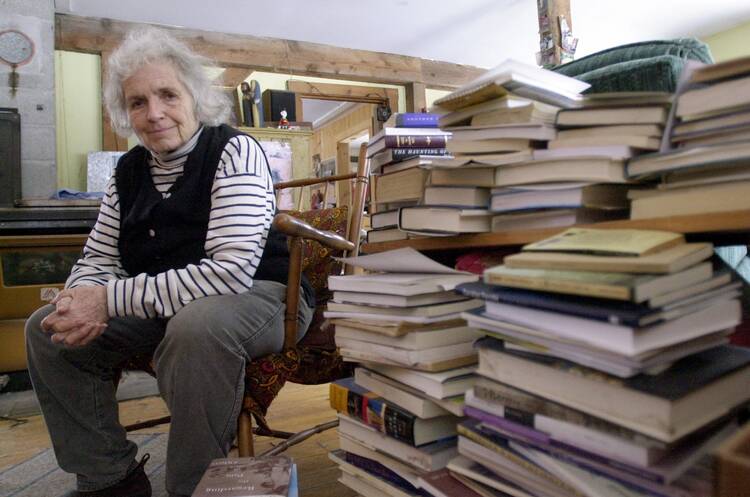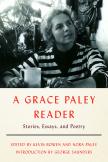A writer who helps us understand the lives of others
Mystery is at the heart of Christian faith. Grace Paley’s work is kindred to our faith, deep as it is with mysteries as wide as the trenches at the bottom of the sea. Paley is a writer who reaches the existential through the quotidian. Telling is the essence of Christian witness and Paley’s work. “She is nothing but a questioner,” Paley describes the role of the writer. Yet she is not without an understanding that the truth can be dangerous, as in this advice to writers:
No matter what you feel about what you’re doing, if that is really what you’re looking for, if that is really what you’re trying to understand…stay with it, no matter what, and you’ll at least live your own truth or be hung for it.
Defining art, she could be describing faith: “What art is about...is the illumination of what isn’t known, the lighting up of what is under a rock, of what has been hidden.” In this, her purpose echoes the Gospel writers, for whom “nothing is hidden, except to be revealed; nor has anything been secret, but that it would come to light” (Mk 4:22).
Her stories bear the same message, full of characters relieved by telling and others suffering for not telling:
Since I already began to tell, I have to tell the whole story. I’m not a person who keeps things in. Tell! That opens up the congestion a little—the lungs are for breathing, no secrets. My wife never tells, she coughs, coughs. All night.... You poor woman, if you want to breathe, you got to tell.”
Crackling wit ripples through her accounts of life in Jewish New York in the early 20th century, and she shows great compassion for her characters. Though they may lack what they need in life, perhaps we the readers can provide it: “Empathy is what I need. The empathy of a true friend is what I have lived without for years.”
Crackling wit ripples through her accounts of life in Jewish New York in the early 20th century.
Downtrodden characters in one way or another are often central in Paley’s work, yet even as they suffer they are able to articulate their feeling with a wisdom that startles and perhaps even begins to heal: “Living as I do on a turnpike of discouragement I am glad to hear the incessant happy noises in the next room.” And: “I sighed and I groaned out, so as to melt a certain pain around my heart. A steel ring like arthritis, at my age.”
This collection includes a number of Paley’s essays, which read like dispatches from all of the conflicts around the world throughout her adulthood. And Paley, who came late to identifying herself as a writer, makes the connection that what unites all of these protests and gatherings is the telling of stories.
Storytelling acquires a sense of urgency when paired with the awareness of time that is often revealed in Paley’s own stories. In the classic “Goodbye and Goodluck,” we learn: “Well by now you must know yourself honey whatever you do life don’t stop. It only sits a minute and dreams a dream.” This consciousness of time passing is often paired with a more direct sense of mortality, as in: “From this lonesome bed you will finally fall to a bed not so lonesome, only crowded with a million bones.”
When Paley finally does understand the centrality of writing in her life—“the whole meaning of my life, which was jammed until midnight with 15 different jobs and places, was writing. It took me a long time to know that, but I know it now.” She also acknowledges fiction as the form that she uses to express truth: “It seemed to me that an entire world was whispering in the other room. In order to get to the core of it all, I used all those sibilant clues. I made fiction.”
Like many other writers, Paley knew by instinct what science now confirms for us: the role reading plays in developing empathy for the other, for considering the other to be one of us and not the “other” at all. “We need our imaginations to understand what is happening to other people around us,”she writes, “to try to understand the lives of others.”
This article also appeared in print, under the headline “A great questioner,” in the October 30, 2017, issue.











